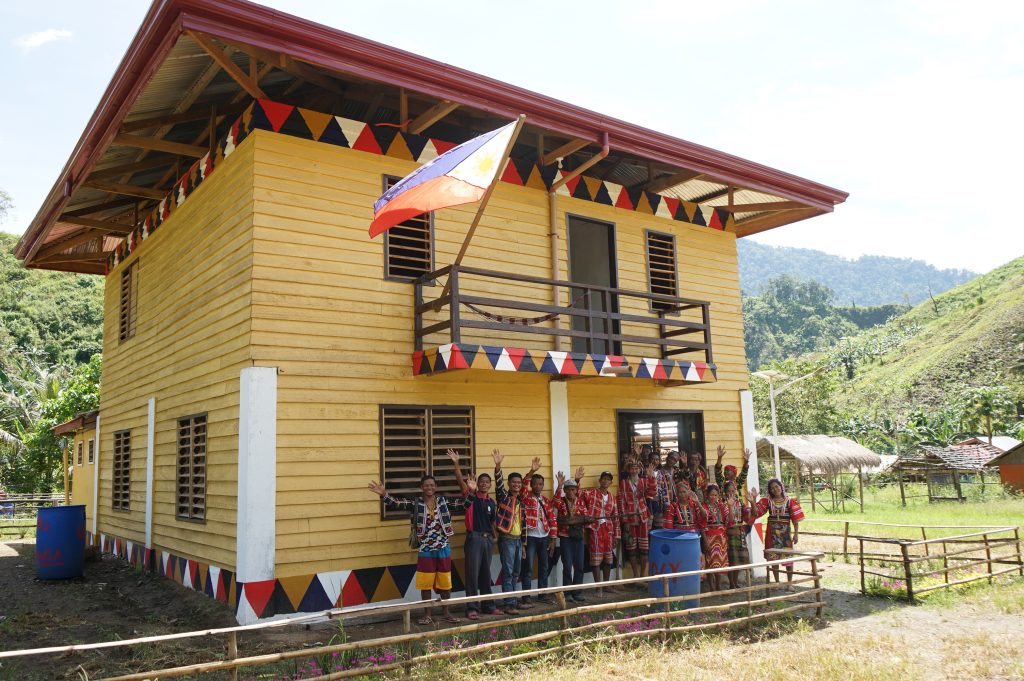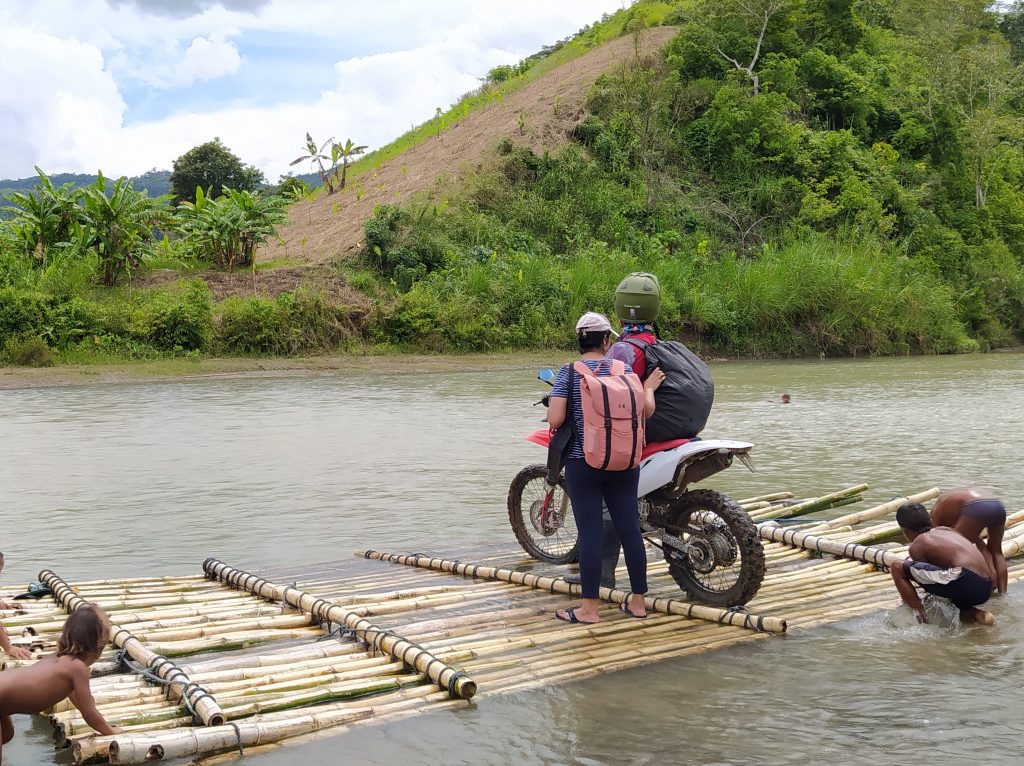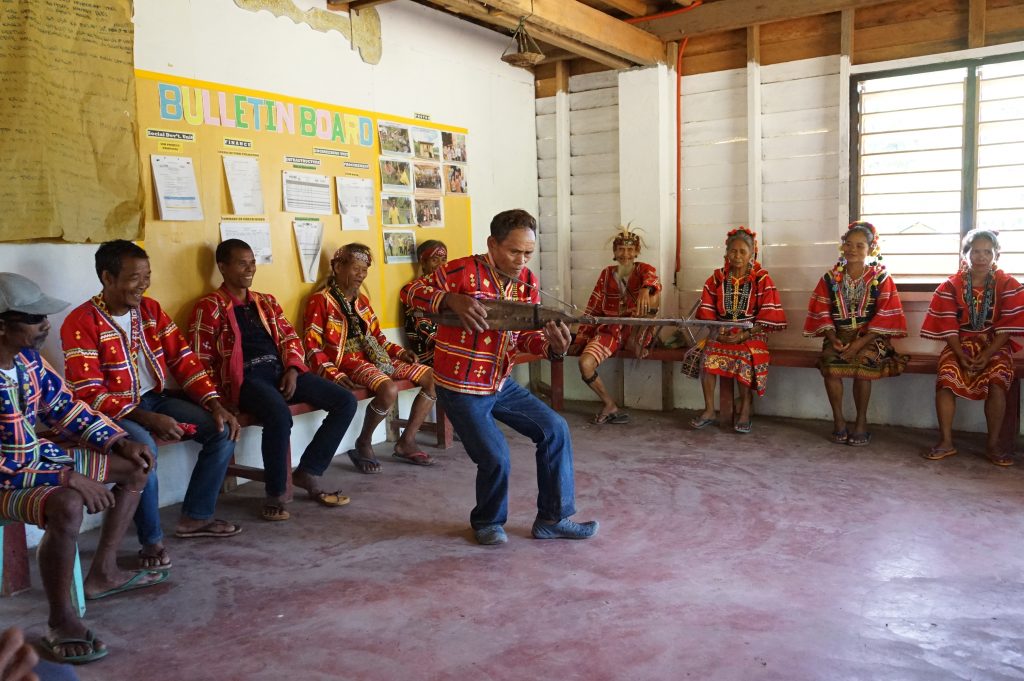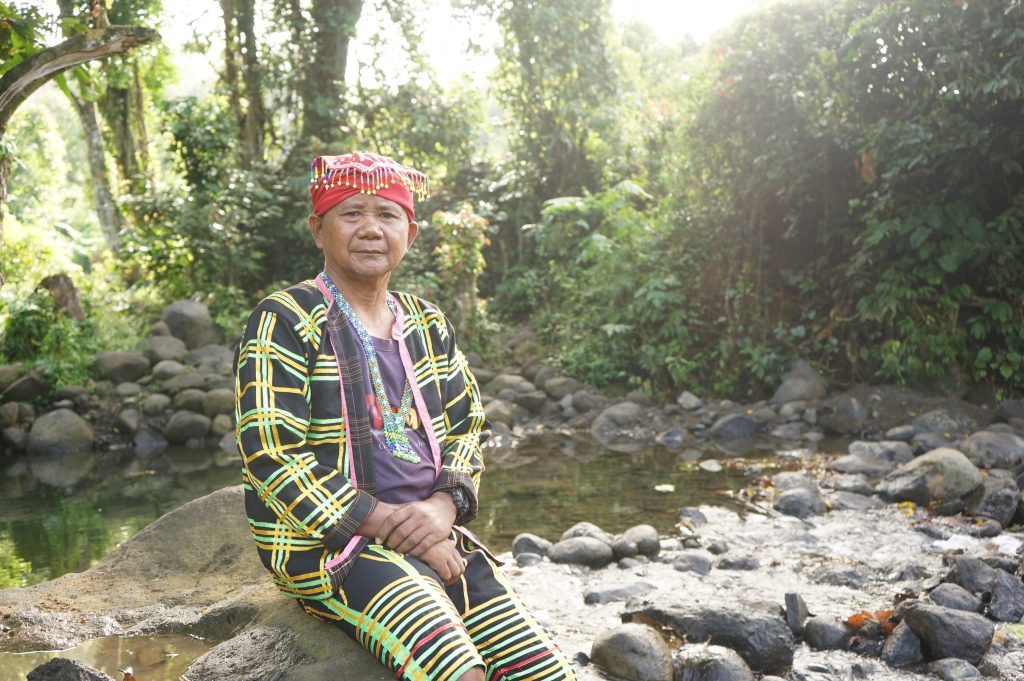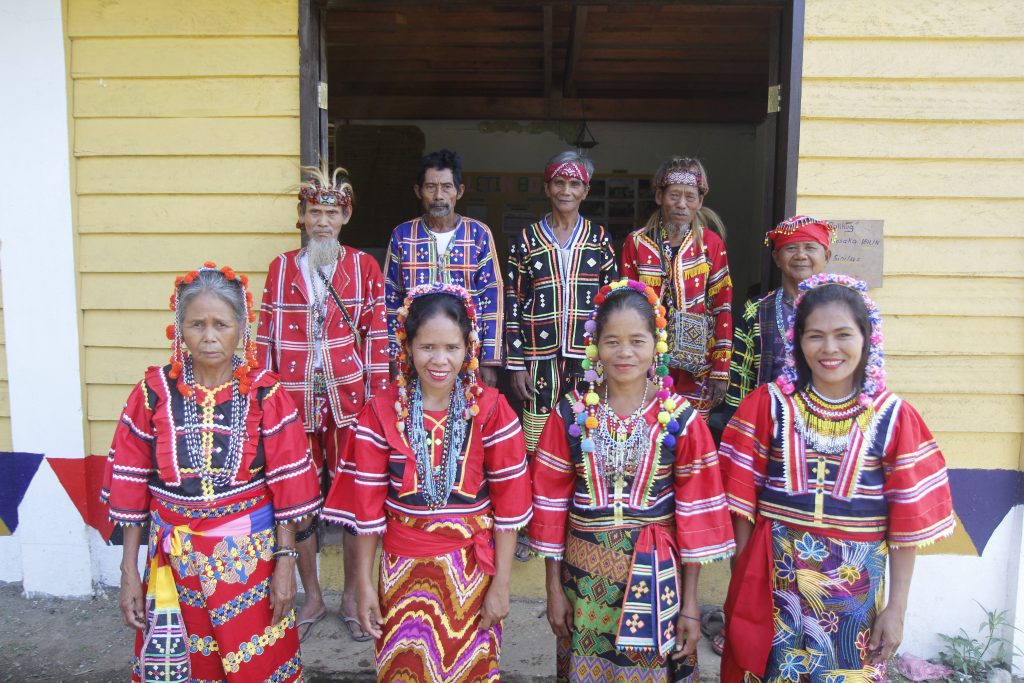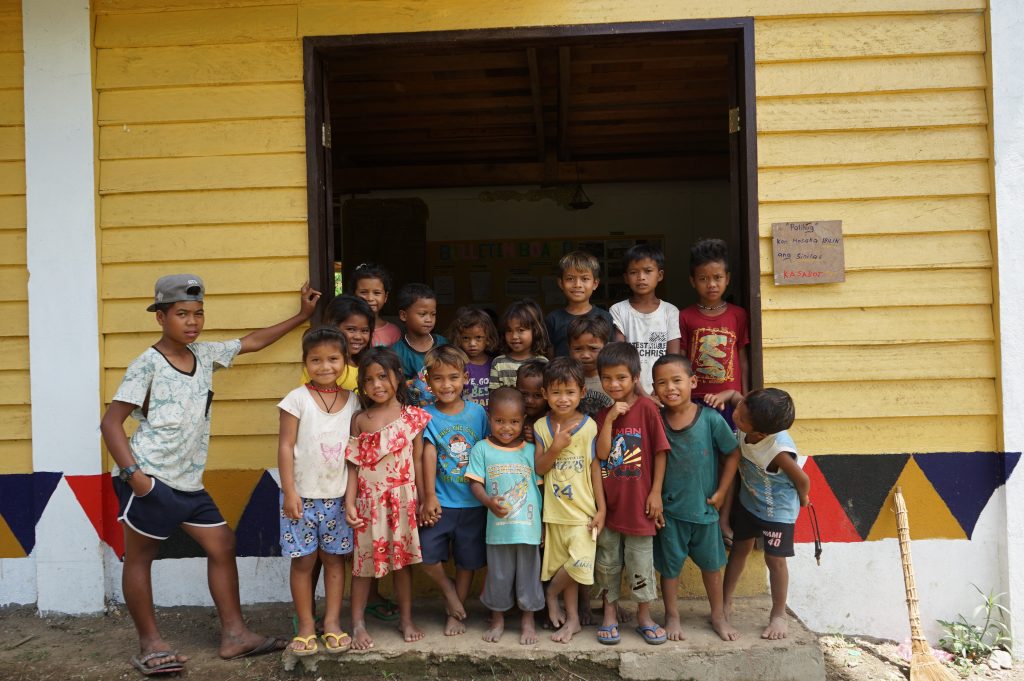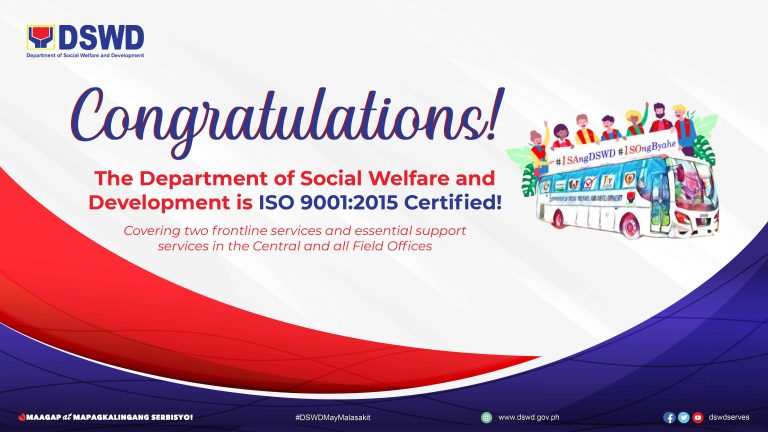“Kato ra gyung naa’y dakong gugma ang maka-ako og-anhi diri” (Only the bighearted will go through great lengths to come all the way here) said one resident.
Not everyone has the chance to visit this village in their lifetime. Either a 4×4 vehicle or a tough motorcycle with an experienced driver is needed to reach this corner of the landlocked province of Bukidnon.
The journey is not for the timid, it is for the bold to voyage through steep mountain slopes and brooks. With rolling hills, panoramic mountain views and overlooking deep valleys, sojourners will surely relish on the beauty of nature, but will also hold their breaths in the course of an exhilarating ride.
The sun must be up to dry out the muddy pathways from the previous day’s afternoon rain. Along the way, road excavation works are done as heavy equipment operators work all day to pave the roads that are once impassable.
Without a compelling cause, one will never bother to travel this remote area.
They call it barangay Kiulom, in Kitaotao, Bukidnon where the Matigsalug tribe lives. They are a distinct sub-group of the indigenous people known as the Manobos. Nestled between the boundary of Davao and Bukidnon, this self-sustaining indigenous community dwells along the banks of the Salug River (now called the Davao River), thus coining their name from the words matig, meaning “from,” and salug, meaning “river.”
But three years ago, the peaceful Matigsalug community faced a great ordeal. The day before Christmas in 2017, Typhoon Vinta, the deadliest tropical cyclone to strike Mindanao, took a heavy toll in barangay Kiulom, destroying homes, properties, livelihood, and all government-initiated projects in the area. They were grateful for reporting no deaths, but they had to rebuild their lives from scratch.
Rescue came from the local government and other agencies and non-government organizations. Houses were built courtesy of an NGO and community settlements were established. En route to Kiulom, tiny color-coordinated houses of red and white are a common sight.
Reaching the barangay proper, visitors and residents need to cross the Salug river. Children swimming under the nagging heat of the sun pull a “gakit”, a raft made out of bamboo that will transport anyone to the other side of the river as their little bodies navigate the waters. It’s twenty pesos each for that favor, and the children return to bask in the water like there’s no tomorrow.
In sentro Kiulom, less than a hundred households gather in community. They rely on solar power. Access to clean water is at a nearby spring, and farming is their source of livelihood. Corn, rice, squash, banana, and various root crops are grown with the eager expectation of pulling a harvest after a few months. Then it’s time to come down from the mountains. They only do small-scale farming because they can only carry what they can. If not on a horse, it means a half-day’s hike carrying their produce until they reach the nearest marketplace about 30 kilometers from the highland.
The routine is the same every day. They go farming in the morning and come home by the afternoon. But the sense of community among the Matigsalug tribe is deeply embedded in their culture. After a day’s toil, the tribe gathers to settle any disputes and issues led by a Datu and his council. For the IPs, a harmonious community comes first. Live at peace with everyone. Reconcile and be considerate to others. Humble down.
Recently, this ancient customary practice is held comfortably in a Tribal Hall with tulugan that the IPs built with the help of the DSWD Kalahi-CIDSS PAyapa at MAsaganang PamayaNAn Indigenous Peoples-Community-driven Development (PAMANA IP-CDD) program.
The IPs manually hauled Lawaan, a type of hardwood, from the mountains. Construction materials from the lowland barangay were transported through the rivers with the gakit. The IPs gave their blood, sweat, and tears for this project.
For what? For their identity. For peace. For community.
“Di gyud mi makatukod og sama niini kung kami lang” (We can never build something like this on our own) said barangay kagawad Manuel Sumaliray. It’s a dream come true to have the tribal hall in their generation today, he said.
The building serves as a trial court, a worship hall, a community center, and an accommodation for visitors. They will no longer gather under a tree, or at someone else’s abode. They now welcome visitors without worrying where they should spend the night.
The construction of 1-unit Tribal hall with tulugan under the DSWD Kalahi-CIDSS PAMANA IP-CDD is the first government project in barangay Kiulom after Typhoon Vinta.
“Ang DSWD pa gyud ang niantos nga mianhi diri” (It’s only the DSWD who persevered to get here) Tribal secretary Meliton Uban said.
For a long time, the IPs were isolated, ostracized and far removed from societal progress. But if there’s one thing that they’ve learned, it’s realizing that the government is on their side.
“Nakita na gyud sa pangagamhanan nga duna’y mga Indigenous People. (The government has finally recognized the Indigenous Peoples) Tribal Chieftain Datu Berto Andip said.
This recent development gives them hope that more projects will come to aid them in rebuilding their community. Projects that are tailored to their needs, customs, worldview, and value system.
“Kini na ang sinugdanan” (This is the beginning) Datu Andip said with a cheerful tone in his voice.
There are many things to learn from the IPs about keys to life. The value of simple living, the treasure of community, and the virtue of hard work. For the IPs, one cannot eat if he does not work. Faith is indispensable. With it, they are never discouraged. Integrity enhances all other values. Keep this and everything will follow.
The IPs have also well-understood that careful stewardship of the environment is paramount to their survival and their children’s future. The land and natural resources on which they depend are inextricably linked to their identity. To them, the spiritual, social, ecological and economic aspects of life go together and not against each other.
On a typical day, the Philippine flag is seen hanging at the Tribal hall’s balcony. It reminds anyone that despite the peaceful, traditional way of life of the IPs, they are one of the most marginalized populations in the country. Not only access to basic social services remains a challenge in their communities today, they are under a threat because of exploitation and destructive forms of development.
Ms Ma. Shirlene Sario works as the Provincial Officer of the National Commission for Indigenous Peoples (NCIP) in Bukidnon. She says that the intangible heritage of the IPs, the wealth of their traditional knowledge is key to solving a myriad of challenges in the country today.
“Government must return to being a true Filipino. If we will just respect our original culture, we will solve a lot of problems”. She said.
Here are the hopes of the Matigsalug IPs. They want a sustainable livelihood earning that can buy coffee, sugar, noodles, soy sauce, salt, cooking oil, garlic and onion to fill their pantry. That’s the ultimate grocery list. They want a better road, better water system, and reliable electricity to charge their handheld radios at night. They wish to have new pairs of their traditional costume, too. They want accessible schools for their children.
When the DSWD Kalahi-CIDSS conquered the distance in barangay Kiulom, it opened a host of possibilities to realize the IPs’ dreams and aspirations. With their unquenchable zeal and resilience to rise from their situation, it pushes others to attempt great things, too.
Together with them, we can be the instrument to realize this.

